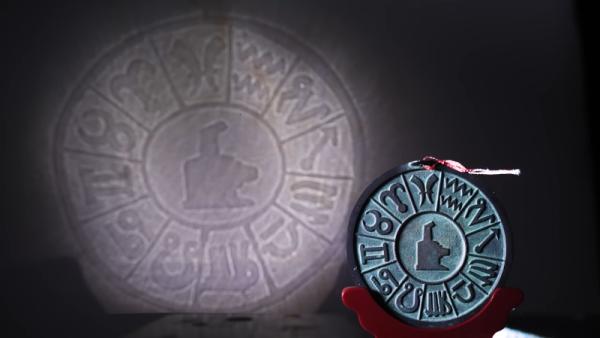One of the Star Trek movies has a McGuffin called “transparent aluminum.” While magic mirrors aren’t really transparent, it appears that way to a casual observer. If you haven’t seen one of these, they are polished metal mirrors with a pattern embossed on the back. When you shine a point source of light on the mirror, however, the reflection matches what is on the back of the mirror. Is it transparent? No, and the video by [Steve Mould] below explains what’s really going on.

The reality is that very subtle variations of the surface produce the image. You need some understanding of optics and calculus to fully understand what’s going on.
The real mystery, though, is how these parts are made. There is some speculation about the thickness of the embossing, but keep in mind that the surface variations are a fraction of a micron. Even more interesting is that not all mirrors reflect the image on the back, which makes you think the image on the back is just a subterfuge and not necessarily part of the fabrication process.
We figure if anyone can figure out how to make these, it is our readers. We’ll entertain any speculation other than using a 555 or an Arduino. We wonder if you could cast these out of epoxy. We’ll admit optics aren’t our strong suit, but we do dig into it occasionally. There’s always a use for a fresnel lens.
Source: MAGIC MIRROR ISN’T TRANSPARENT METAL
